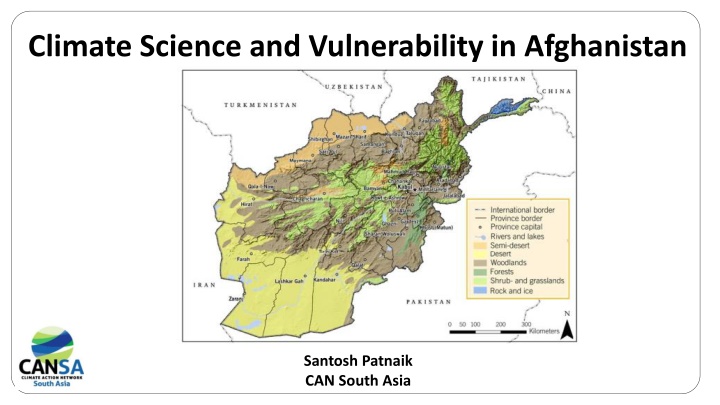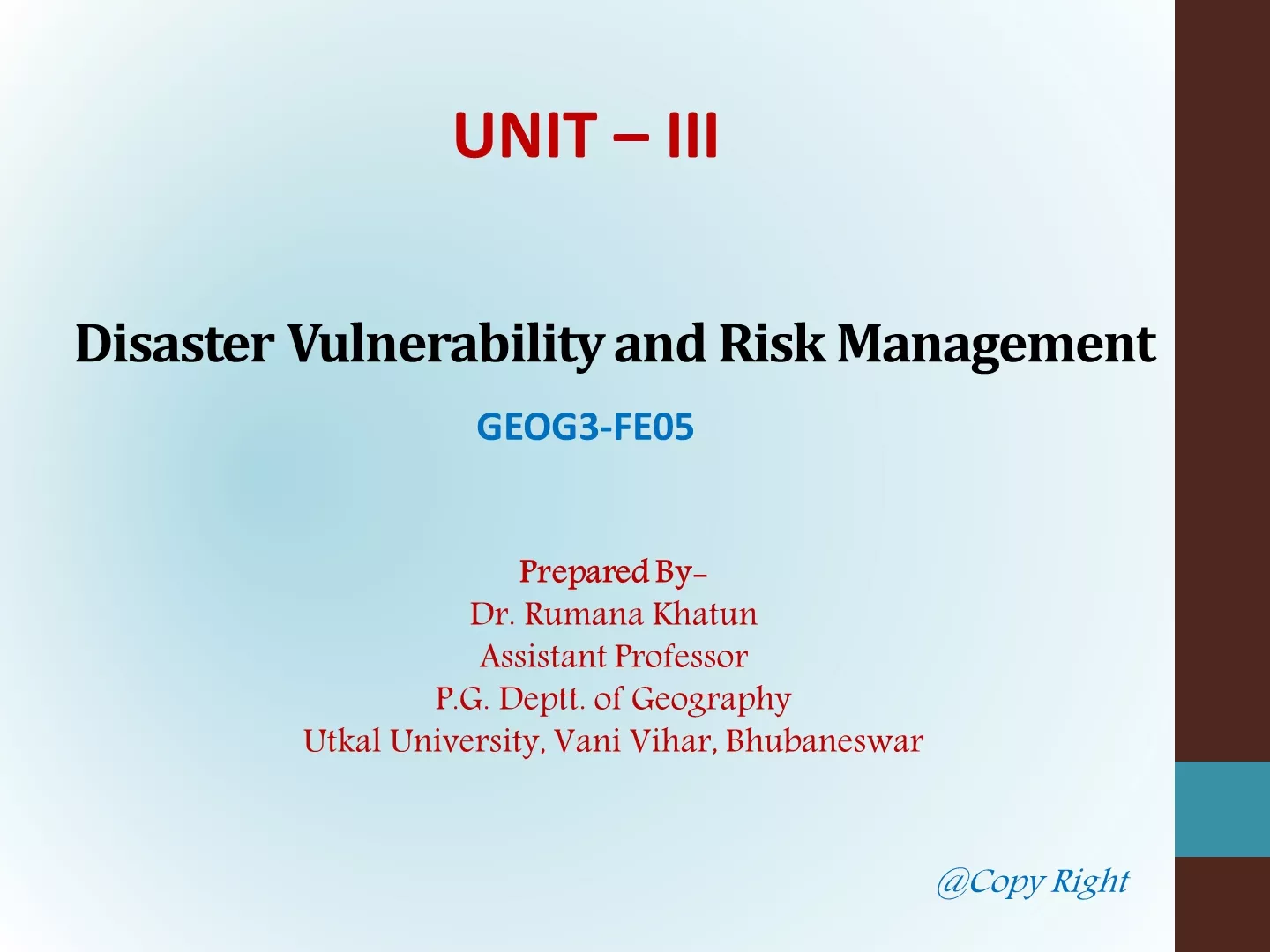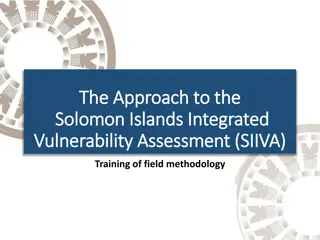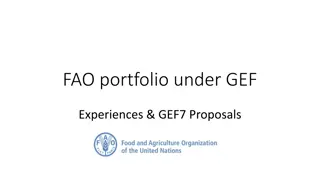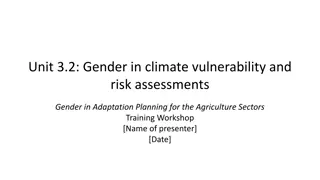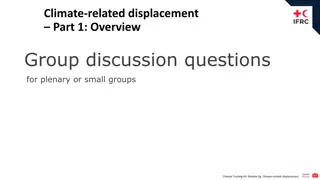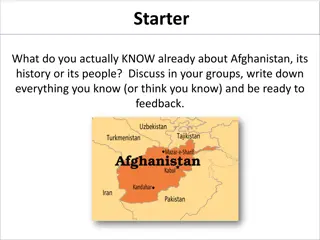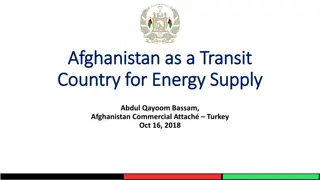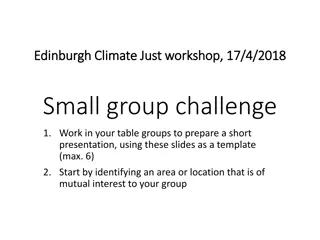Climate Science and Vulnerability in Afghanistan
Afghanistan is facing significant climate change challenges, with increasing temperatures and changing precipitation patterns leading to droughts, floods, landslides, and other hazards. The extreme geography of Afghanistan exacerbates these impacts, with vulnerable communities experiencing devastating consequences. Despite these challenges, there is potential for increased productivity in historically colder regions due to a warmer climate.
Download Presentation

Please find below an Image/Link to download the presentation.
The content on the website is provided AS IS for your information and personal use only. It may not be sold, licensed, or shared on other websites without obtaining consent from the author.If you encounter any issues during the download, it is possible that the publisher has removed the file from their server.
You are allowed to download the files provided on this website for personal or commercial use, subject to the condition that they are used lawfully. All files are the property of their respective owners.
The content on the website is provided AS IS for your information and personal use only. It may not be sold, licensed, or shared on other websites without obtaining consent from the author.
E N D
Presentation Transcript
Climate Science and Vulnerability in Afghanistan Santosh Patnaik CAN South Asia
Climate Change and Afghanistan - Extreme heterogeneous geography of Afghanistan, ranging from the glacier-covered Hindu Kush in the north to the arid deserts in the south - Each decade; Afghanistan has lost 2% of its rain and snowfall due to Climate Change - Annual average temperatures in Western Afghanistan from 1950-2010 (World Bank report South Asia s Hotspots) - Average temperature across Afghanistan has increased by 0.6 C since 1960 (Tyndell Centre for Climate Change Research,2010) - Adaptation challenges facing Afghanistan are very significant in scope and scale (SEI 2009) - Karakorum will receive more precipitation due to an increase of westerly disturbances (Ridley et al. (2013) - Warming of 2 C and a slight increase of precipitation (8 10%) until 2050 for the Upper Indus Basin, including its Hindukush part has risen by 1.0 C to 3.0 C
Impacts Ongoing Drought in 2018 - 2 million people in 22 provinces affected Floods and Landslides - Feb 2013 - 1,600 families had been affected, 26 people had been killed, and about 425 homes had been damaged or destroyed in 15 of Afghanistan's 34 provinces Flooding in May 2014 - affected 90,000 people - displacing 20,000 - in 14 northern provinces, damages exceeding $100 million
Contd.. - Intense and recurring hazards, including earthquakes, floods, flash floods, landslides, avalanches and droughts - Flooding is the most frequent hazard - Second only to Haiti in terms of the number of fatalities from disasters between 1980 -2015
Landslide in Badakhshan Submerged homes due to floods in Northern province of Afgahnistan
Flashfloods in Baghlan province Avalanches in BadaKhshan province Photo Courtsey : Sameera Noori, CoAR
Positive Effects A warmer climate can increase productivity in historically colder regions such as mountainous areas Climate change may increase precipitation in some areas in Afghanistan From 1950 through 2010, increasing monsoon precipitation are found for parts of eastern Afghanistan Average temperatures in Afghanistan are still less than the inflection point, which means increases in temperatures are predicted to have a net positive effect on consumption
Climate Parameter Vulnerability Impact Rise in extreme temperature -Low adaptive capacity and high exposure to climate fluctuations - Geographic parameters such as low latitude and continentality - Heat Wave reduces in agricultural and labour productivity, - Decline in health indicators due to vector borne diseases - Climate induced migration, and other factors that affect economic growth and poverty reduction Erratic rain and snowfall -Water sources are heavily dependent on annual rainfall and snowfall - Subsistence Agriculture is the main source of livelihood - Rain-fed agriculture (Spring precipitation) is predominant (16.4%), while only about 7% of the land is available for irrigated agriculture -Leads to drought and over exploitation of ground water - threatens the grasslands and crop productivity - Recurrent droughts is expected to affect hydropower production Rapid snow melt and extreme rainfall - Mountainous landscape -Poorly built flood protection infrastructure - Lack of early warning systems - Increasing settlements in flood prone areas - Lack of vegetation in mountain tops and denuded hills adds to severity of floods -Lack of proper drainage causes urban flooding - Lack of robust early warning system -Flooding in rivers due to steep slopes - Erosion that harms agriculture - Loss of lives and livelihood
Energy budget and greenhouse effect The delicate balance between the incoming short wave (ultra violet) radiation and the outgoing long wave (infra red) radiation maintains earth s surface temperature at a level sufficient to support life on the planet Some gases (called greenhouse gases) present in the earth s atmosphere (in trace amounts) trap the outgoing radiation, raising the temperature of the earth s surface the phenomenon is commonly known as greenhouse effect
Causes of climate change GHG emissions from Industrialization Urbanization Deforestation Land use changes
The six main greenhouse gases: Carbon dioxide (CO2); Methane (CH4); Nitrous oxide (N2O); Hydrofluorocarbons (HFCs); Perfluorocarbons (PFCs); and Sulphur hexafluoride (SF6)
Leaked IPCC 1.5C draft report In 2015, Paris Agreement established twin goals to hold temperature rise from pre-Industrial times well below 2C and strive for 1.5C. The world is warming roughly 0.2 C each decade.
